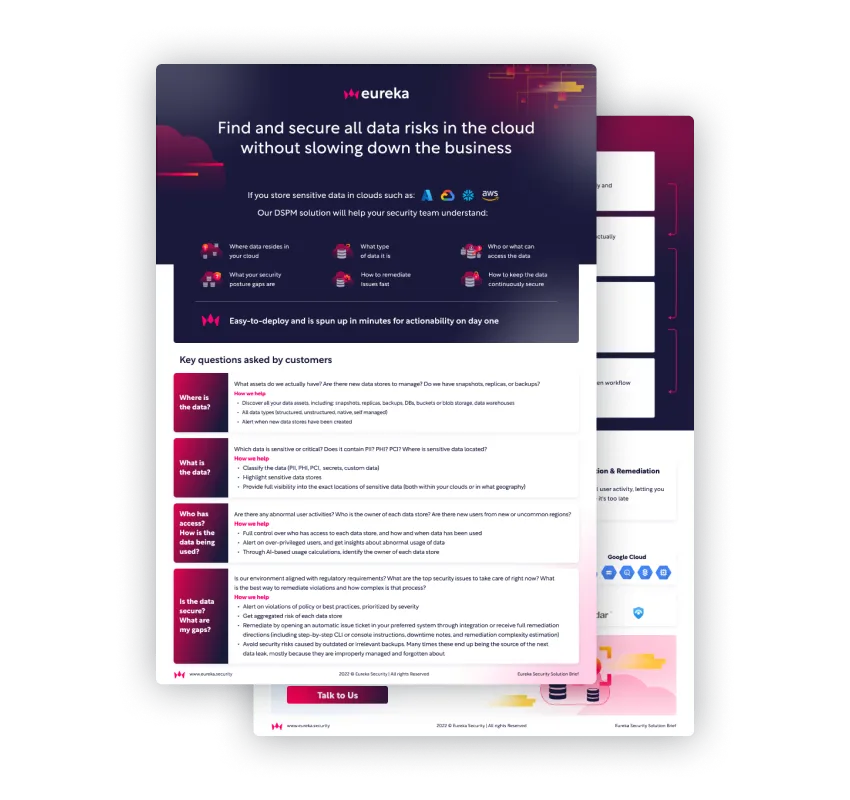In today’s digital world, data reigns supreme. It fuels everything from customer insights to internal operations, making it a crucial organizational asset. Exposing data may seem counterintuitive to organizations used to on-prem databases with stringent security guardrails, but in the modern business environment, as data travels across platforms and locations, organizations have realized the necessity and value of sharing data externally in order to improve business processes and partnerships. That being said, along with its benefits, data exposure can have significant security ramifications and risks that demand your attention.
Why Do Organizations Expose Data?
There are several reasons why business collaboration often necessitates data exposure:
- Partnerships: Businesses increasingly work together, sharing data with vendors, service providers, and other partners to streamline processes, enhance customer experiences, and drive innovation. Example: A financial institution might use a third-party platform for real-time transaction management, granting access to internal financial data.
- SaaS Applications: Software-as-a-Service (SaaS) applications are essential tools used frequently by modern businesses. Many rely on SaaS solutions for day-to-day core tasks like CRM, HR management, and finance. In order to provide value and function properly, these applications require access to specific organizational data. Example: A company might use a CRM platform to track sales pipelines and personalize marketing efforts, requiring the sharing of customer data.
- Shared Public Resources: Cloud computing and data lake technology have led to the rise of shared public resources like databases (e.g., Snowflake). These shared environments offer scalability and cost-effectiveness but require careful access management.
- Example: Organizations might leverage analytics and BI platforms on a shared cloud database to track performance metrics and derive insights across departments.
The Risks of Data Exposure
Along with the benefits detailed above, data exposure comes with inherent risks:
- Data Breaches: Exposed data is more vulnerable to breaches, unauthorized access, and malicious attacks. A single security lapse can lead to financial losses, reputational damage, and legal consequences.
- Compliance Issues: Organizations must comply with data privacy regulations like GDPR, CCPA, and HIPAA. Failure to properly protect sensitive data can result in hefty fines and a loss of trust from customers and stakeholders.
- Data Misuse: Shared data can be misused or exploited by insiders or external threats, placing the entire organization at risk. Strong access controls, encryption, and monitoring tools are crucial to mitigate these risks.
Mitigating the Risks
Organizations can minimize the risks associated with data exposure by adopting these best practices:
- Encryption: Encrypting data at rest and in transit safeguards it from unauthorized access and interception.
- Access Controls: Implementing granular, least-privilege access controls ensures that only authorized personnel are granted access to sensitive data, based on their roles within the organization.
- Regular Audits and Monitoring: Conducting regular security audits, vulnerability assessments and continuous monitoring helps identify and address security threats and vulnerabilities proactively.
- Data Masking and Anonymization: Masking or anonymizing sensitive data before sharing it with third parties reduces the risk of exposure and protects individual privacy.
- Vendor Risk Management: Before engaging with third-party vendors or SaaS providers, organizations should conduct thorough risk assessments and due diligence, and establish contractual agreements to ensure compliance with security standards and regulations.
Striking a Balance
Instead of barricading the walls of your organization to minimize data exposure or over-exposing data without guardrails in order to reap the business benefits, we suggest finding the right balance between business and security goals. Data exposure may be a necessary evil for increased collaboration, innovation, and business growth, but organizations must prioritize data security, privacy, and compliance to effectively mitigate the inherent risks.
Data Security Posture Management (DSPM) tools can significantly enhance an organization’s ability to manage data exposure risks while allowing necessary data exposure for improved business processes. DSPM solutions provide comprehensive visibility into data location, sensitivity, usage, and compliance posture across hybrid cloud environments. They automate security policy enforcement, streamline compliance management, and proactively detect and address security vulnerabilities – without obstructing productivity, collaboration or efficiency.
By adopting a proactive approach with DSPM tools alongside best practices like encryption, access controls, and vendor risk management, organizations can effectively safeguard sensitive data while reaping the benefits of data exposure for business success.
Subscribe for updates
For our latest feature releases and updates
Thank you for signing up!
Oops! Something went wrong while submitting the form.

Download Eureka solution brief
Learn more about how Eureka can help you
*** This is a Security Bloggers Network syndicated blog from Cloud Data Security | Eureka Security authored by Eureka Security. Read the original post at: https://www.eureka.security/post/unveiling-the-risks-and-rewards-of-exposing-your-data

